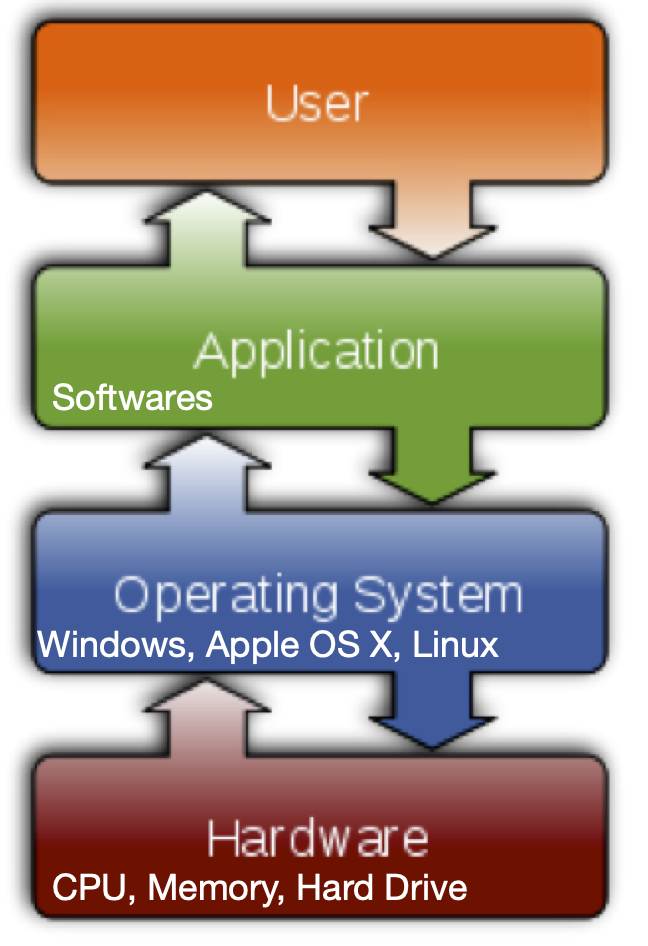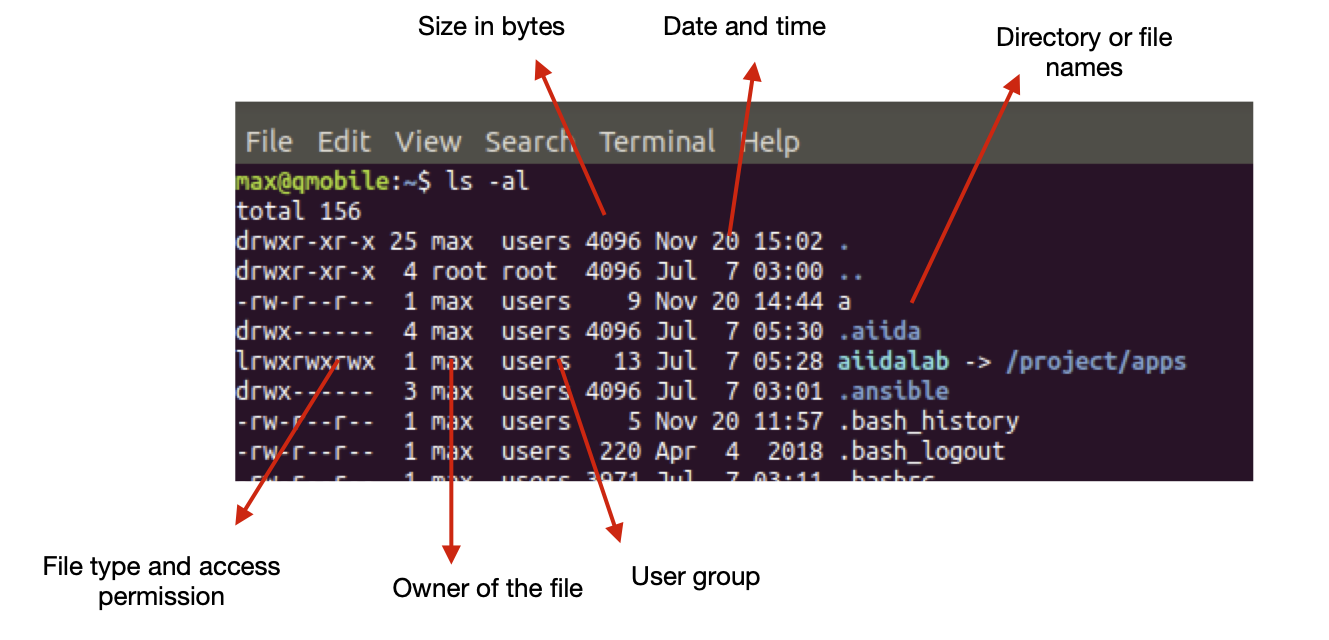Warming up with Unix commands: Difference between revisions
| Line 99: | Line 99: | ||
You can see the list of the files, containing information for each file including the owner and the group, the permissions (who can read, write, or execute that file), the dates it was modified, the size etc. Here is an example: | You can see the list of the files, containing information for each file including the owner and the group, the permissions (who can read, write, or execute that file), the dates it was modified, the size etc. Here is an example: | ||
[[File:Permission.png|600px | left]] | [[File:Permission.png|none | 600px | left]] | ||
Permissions can be changed using the <code>chmod</code> command: | Permissions can be changed using the <code>chmod</code> command: | ||
Revision as of 10:25, 21 November 2020

Getting Stearted

In this lesson, you will learn some basic commands of the Unix operative system. The operating system (OS) is the system software that manages computer hardware, software resources, and provides common services for computer programs, i.e. allow the communication between hardware and software. In order to use a computer, you need an OS. At this moment you are using a Virtual Machine containing the Ubuntu OS, a Linux distribution, a Unix-like OS. The command used in Linux and Unix they are essentially the same.
If you open a terminal window a prompt will appear where you can type your command. A snapshot of the prompt is shown here below:

You can inspect your environment by typing the following commands:
$> whoami # (my username) $> hostname [-A] # (machine name) $> pwd # (current directory) $> ls [-ltr] # list files and dirs $> ps # running processes $> top # more on running procs $> date # show date and time
Filesystem
As seen above, the command $pwd (present working directory) shows the directory you are presently working on. Now we want to see how to navigate to other directories. This is done by using the command cd (change directory) followed by a path.
If we want to move for instance to the folder LabQSM we need to provide its path. A path is the address of a file or a folder.
We can use an absolute path:
$> cd /home/max/LabQSM
or a relative path:
$> cd ./LabQSM
provided that you are already in /home/max. This avoids typing complete paths.
You can then navigate up on level by typing:
$> cd ..
and you will be back to the HOME directory. You can also navigate to multiple directories as:
$> cd ./LabQSM/LAB_1/test_diamond
Finally the command
$> cd or $> cd ~ or $> cd $HOME
takes you to the HOME directory, independently of the present working directory.
Creating, removing, copying and moving files and directories
A way to create a new file is the following:
$> cat > filename- Enter the content e.g. your name
- Press
ctrl + dto return to command prompt.
A file named filename containing a text with your name has been created.
You can find it in the list using the ls (list) command,
and you can inspect it by typing:
$> cat filename
We will see later other ways to create and edit files using the editor named vi.
To create a new directory use the command:
$> mkdir dirname
Files and directory are removed using the command rm, as
$> rm filename $> rm -r dirname
To move a file from a directory to another, use the command mv:
$> mv filename ./LabQSM
The same syntax applies also for moving directories. The same command is also used to rename (or overwrite) files:
$> mv filename newfilename
File and directory can be also copied (duplicated) in the same directory or in other directories:
$> cp filename ./LabQSM/ #copy the file in the LabQSM directory with the same name $> cp filename ./LabQSM/newname #copy the file in the LabQSM directory with a new name $> cp -r dirname ./LabQSM/ #copy the directory dirname and all its content in the LabQSM directory
In all cases, when the possibility of losing information exists, a confirmation is asked to the user (who has to provide a y/n answer).
This behaviour can be switched off by using the flag -f (force) on each of the commands above (rm, mv, cp).
Instead the option -i (interactive), makes the command require the user interaction.
Users, Groups & Permissions
Now let's inspect the content of a directory in details, by typing
$> ls -al
You can see the list of the files, containing information for each file including the owner and the group, the permissions (who can read, write, or execute that file), the dates it was modified, the size etc. Here is an example:

Permissions can be changed using the chmod command:
$> chmod a+r file # makes file readable by everyone $> chmod u+x file # makes file executable by the user $> chmod go-rw file # makes file not readable nor writable by group and others
In the example above, the community of users is described by means of u,g,o,a (user, group, others, all). As an examples, users belonging to the same group of the file will have permissions specified for g, etc.